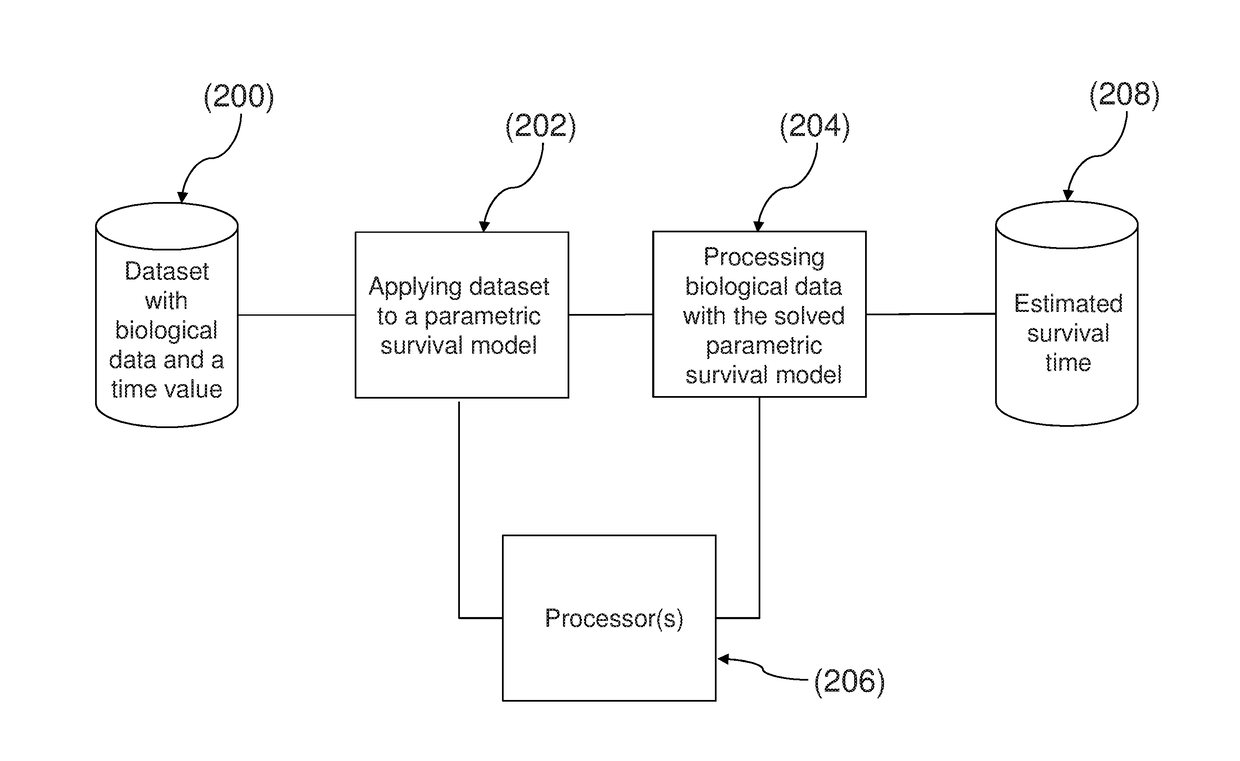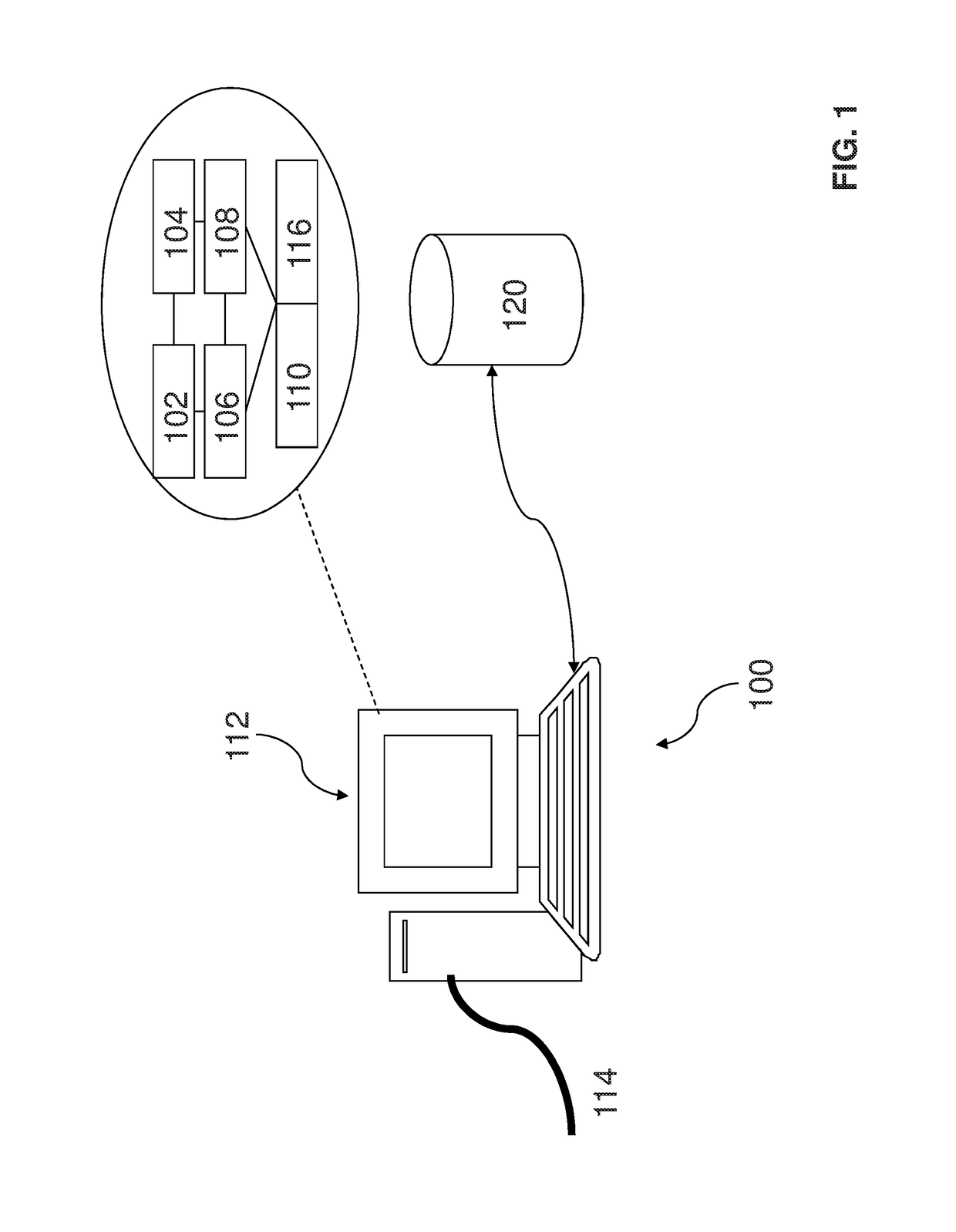Method and system for determining an estimated survival time of a subject with a medical condition
a technology of estimated survival time and system, applied in climate sustainability, ict adaptation, instruments, etc., can solve the problems of censorship of datasets, significant reduction of predictor's performance, and attractive prediction of cancer patient survival time based on microarray gene expression datasets with high-dimensionality and low sample siz
- Summary
- Abstract
- Description
- Claims
- Application Information
AI Technical Summary
Problems solved by technology
Method used
Image
Examples
example 1
Analysis of Simulated Data
[0096]The AFT model has been implemented and evaluated with five different regularization approaches (RS, Lasso, L1 / 2, Elastic net (EN), SCAD) with simulated datasets.
[0097]Firstly, the vectors of independent standard normal distribution
γ0,γi1,γi2, . . . ,γip, (i=1,2, . . . ,n) were generated, then
xij / γij√{square root over (1−c)}+γi0√{square root over (c)}, (j=1, . . . ,p),
[0098]where c is the correlation coefficient, and the patient's survival time
yi=exp(∑j=1pβijxij),(j=1,2,…,p).
[0099]The number of the censoring data has been decided by the censoring rate, and the censoring time points yi′ were determined from a random distribution accordingly. The observed survival time in the simulated data was defined as:
yi=(yi,yi′), and δi=I(yi≦yi′).
[0100]To test the performance of the AFT models with different regularization approaches in the noise environment, yi=yi+s·ε, was calculated where s and are the noise control parameter and the independent random errors from...
example 2
[0108]Analysis of Real Data
[0109]The different AFT models were applied to four real gene expression datasets respectively, such as DLBCL (2002) (Rosenwald, A. et al., N. Engl. J. Med 346, 1937- 1946), DLBCL (2003) (Rosenwald, A. et al., Cancer Cell 3, 185-197), Lung cancer (Beer, D. G. et al., Nat. Med 8, 816-824.), AML (Bullinger, L. et al., N. Engl. J. Med. 350, 1605-1616). A brief overview on these datasets is given in Table 2.
TABLE 2Overview on the four real gene expressiondatasets used in Example 2.No. ofNo. ofNo. ofNo. ofNo. ofDatasetsgenessamplescensoredtrainingtestingDLBCL (2002)739924010216872DLBCL (2003)881092286428Lung cancer712986626026AML6283116498135
[0110]In order to accurately assess the performance of the five regularized AFT models, the real datasets were randomly divided into two pieces: two thirds of the patient samples were put in the training set used for the model estimation and the remaining one third of the patients' data was used to test the prediction capab...
PUM
 Login to view more
Login to view more Abstract
Description
Claims
Application Information
 Login to view more
Login to view more - R&D Engineer
- R&D Manager
- IP Professional
- Industry Leading Data Capabilities
- Powerful AI technology
- Patent DNA Extraction
Browse by: Latest US Patents, China's latest patents, Technical Efficacy Thesaurus, Application Domain, Technology Topic.
© 2024 PatSnap. All rights reserved.Legal|Privacy policy|Modern Slavery Act Transparency Statement|Sitemap



